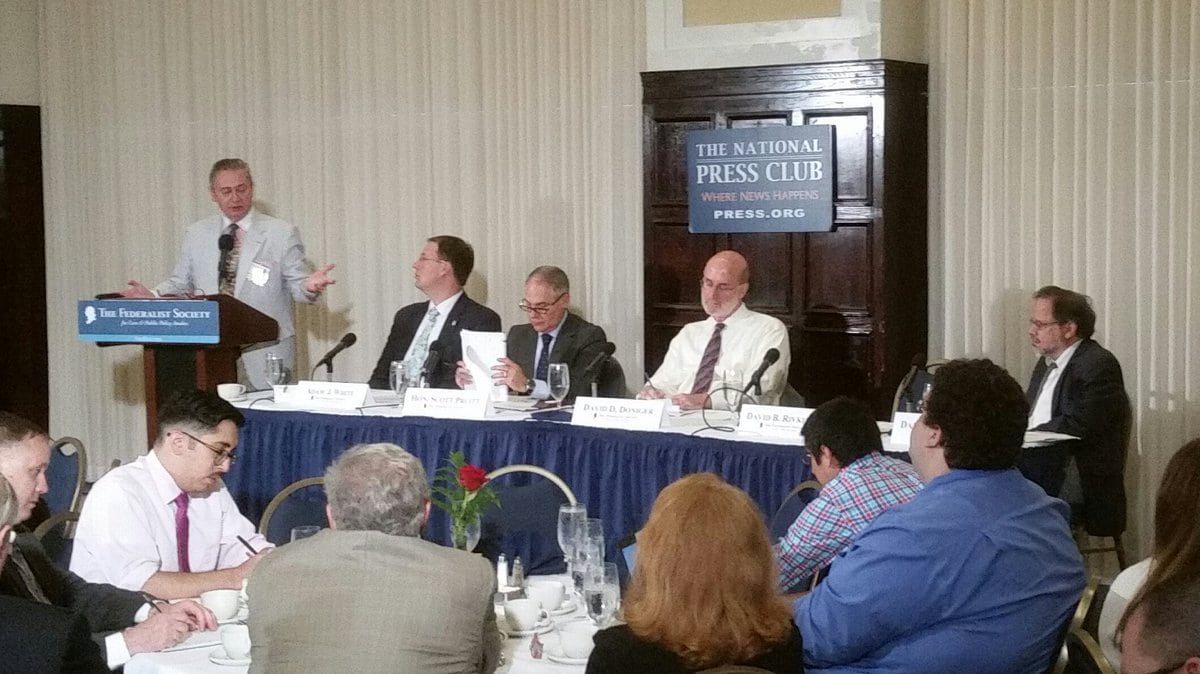
Trying to achieve an ambitious climate change agenda while butting heads with an unfriendly Congress, the Obama administration turned to regulation to reach its goals, and that’s no surprise, Oklahoma Attorney General Scott Pruitt (R) said Tuesday during a briefing hosted by the Federalist Society in Washington, D.C. “I don’t blame the administration for taking a policy position addressing carbon reduction that is obviously an important matter for them to deal with, and they want to deal with, and Congress [does] not. So, the executive branch has used its agency and rulemaking authority to try to pinch-hit … despite that, it doesn’t make it right,” he said.
The regulation in question, the Clean Power Plan, is the subject of a lawsuit pitting Oklahoma and 26 other states, numerous trade organizations, electricity generators, and utilities against the EPA. The Supreme Court in February halted implementation of the rule until after the legal challenge has been resolved. Oral arguments in the case are scheduled for Sept. 27 before the U.S. Court of Appeals for the D.C. Circuit.
The Clean Power Plan requires states to develop action plans to reach federally set emissions reduction targets.
What is wrong with the Clean Power Plan, Pruitt said, is that it calls for actions to be taken in the energy market instead of at individual plants. The section of the Clean Air Act under which the Clean Power Plan was drafted calls for the Environmental Protection Agency to determine the “best system of emissions reductions (BSER).” The Clean Power Plan includes in the BSER measures such as generation shifting — running coal plants less and renewable energy sources more.
“I think what is unique… is that the EPA is taking that phraseology, that best system of emission reduction, and interpreting it as generation shifting. It’s not an approach by the EPA to say we think the best system of reduction for this particular facility is this type of emission control equipment; this is an approach that says it is absolutely generation shifting,” Pruitt said.
By including outside the fence measures, the EPA was simply accounting for the reality of how the energy industry works. Generation shifting is much less expensive than installing technology to reduce carbon emissions, such as carbon capture and storage, so it follows that faced with emissions caps, generators will turn to market-based approaches, said David Doniger, policy director and senior attorney for the Natural Resources Defense Council’s climate and clean air program.
The petitioners in the Clean Power Plan lawsuit are asking the court to force the EPA to set the emissions reduction targets using only inside the fence-line measures while allowing generators comply using all available measures. “That’s like the golfer who wants to set his handicap playing 18 holes of golf with one club and then wants to play against his handicap with all the clubs in the bag,” Doniger said.